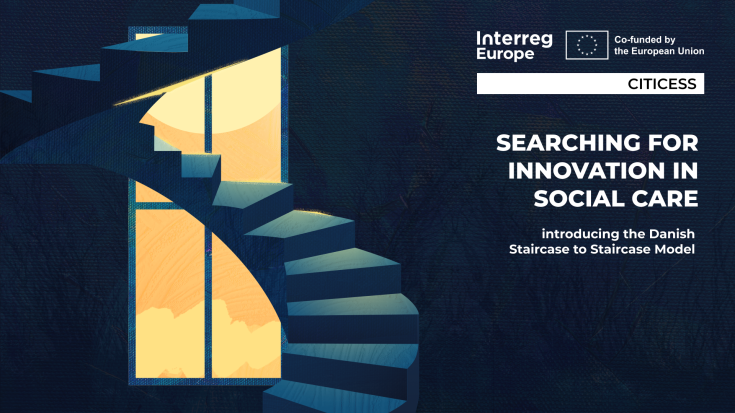Searching for innovation in social care

Third-country immigrants, homeless people, people with mental health problems, lonely elderly, roma population, Irish travellers are some of the target groups of our project: the ones who need social services the most face the most difficulties in accessing help from the municipality or the government. This is the issue CITICESS addresses: trying to improve the lives of marginalized, vulnerable groups by searching for innovative solutions across Europe. But what does innovation look like in the social sector?
That is what we are about to find out in the next three years. Innovation may manifest as new methods, policies or technology. A great example we would like to showcase is one of the pillars of our project: the Danish Staircase to Staircase model. The partnership traveled to Aarhus to learn more about the project, meet the program’s coworkers and exchange experiences.
The target group of this pilot consists of families who struggle with health problems and social issues. The main criterion for inclusion in the program was being unemployed for a long time. The chosen families had an average unemployment rate of 9 years, which is a significant issue in itself, but it is also connected to other problems: they might not leave their flat for a long time if they don’t have a job to go to, they are lacking a healthy amount of movement leading to several health issues, and not having sufficent social interactions might challenge their mental health as well. These are only a couple of examples of what these vulnerable groups experience and there can be many more issues, like children dropping out of school, neighbourhood security, housing problems and addictions. It is easy to see how helping these families can be challenging due to the complexity and interconnectedness of their problems.
The municipality’s role is not only to help these families individually, but to build a system around it, using the public funds most effectively. To address all these issues, the City of Aarhus started a special pilot, trying a completely different method. Let’s take a look at what can we learn from their experiences:
Giving control back to the families
It is important to note that families themselves know best what they need the most. Instead of immediately offering plans and solutions, the families should be involved in developing a plan to resolve their issues.
Job first approach
Unemployment can be the root cause of many problems, and finding the right job can solve numerous issues. The goal should not only be to find any job but to find a sustainable solution. This might require additional effort and long-term cooperation with the families.
More citizen, less system
This is the principle Aarhus is following in their new guidelines called “Aarhus Compass”. Thinking about the existing structure of the social systems, if someone has different kinds of problems, they have to approach different institutions, complete paperwork and wait in line to access the help the municipality can provide. From the citizens’ perspective it is only logical to receive all these services from the same source.
Interdisciplinary approach
All these complex issues require very different types of expertise, that explains the many different institutions usually present in the social system. The new approach of Staircase to Staircase encourages the information flow between disciplines, and creates a team that works together: job consultants with health consultants, family advisors, pedagogues, pediatric psychologists and cultural consultants.
So how do these principles come together in a successful model? What are their results, and what is actually happening in the neighbourhood?
We will explain in the second part of the article.
